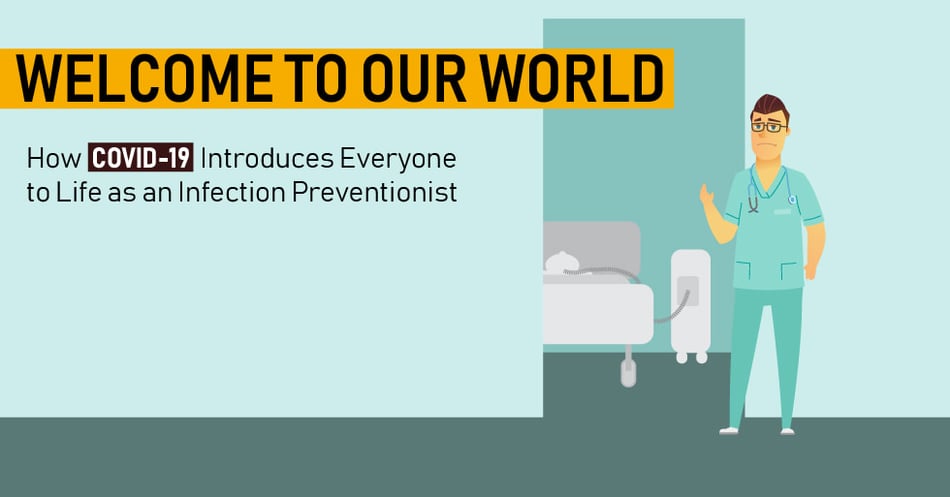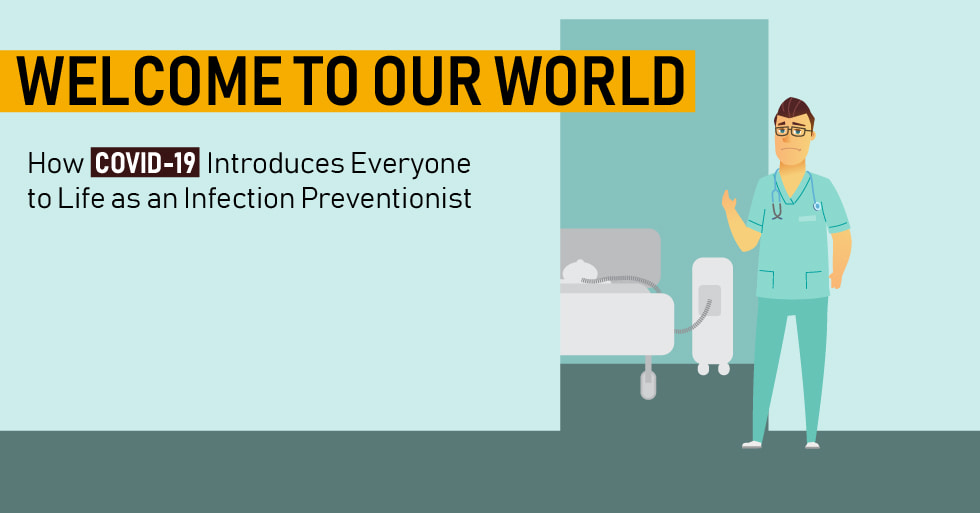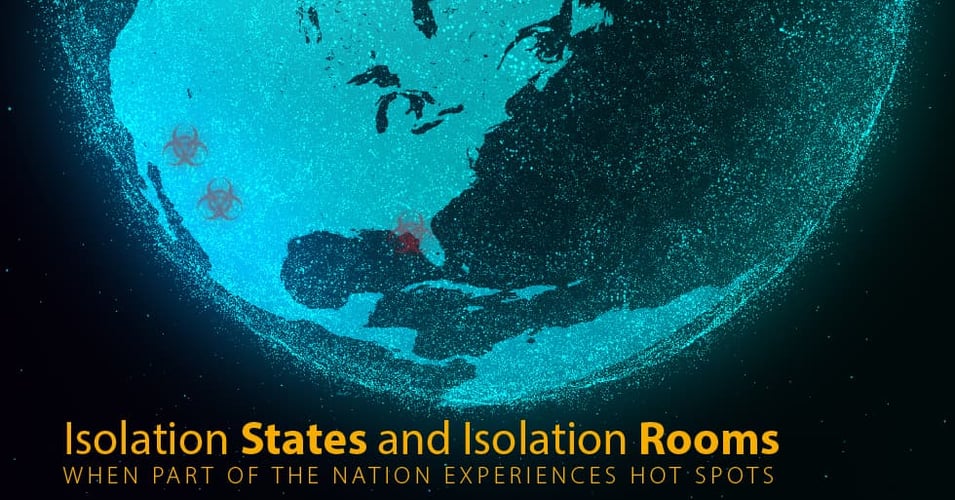Welcome to Our World: How COVID-19 Introduces Everyone to Life as an Infection Preventionist

 The global coronavirus pandemic has offered a sudden welcome into the world infection preventionists face every day: The fight against pathogens. Protocols, vocabulary, equipment and data collection that used to be restricted to epidemiologists have now entered the everyday vernacular. In today's post, we'll look at some of those examples.
The global coronavirus pandemic has offered a sudden welcome into the world infection preventionists face every day: The fight against pathogens. Protocols, vocabulary, equipment and data collection that used to be restricted to epidemiologists have now entered the everyday vernacular. In today's post, we'll look at some of those examples.
Before many cities had shut down for social distancing, one of the first things that the everyday American became an expert on was cleaners and disinfectants. As we all rushed to be prepared for handwashing and surface disinfection, there was a run on hand sanitizer, disinfecting wipes, and other cleaners. People who had never read labels learned to look for the word "virucide" on their cleaning products. We learned that splashless bleach was not a disinfectant.
Soon after it became obvious that containment was no longer an option, we all became very aware of the idea of mitigation through isolation. Americans learned what every infection preventionist knows: We have to keep apart if we want to flatten the curve. That slowing the spread can have a huge impact on how well we can handle the outbreak. Now each of our homes is an isolation room.
We focused on keeping our older, more vulnerable neighbors safe. Those in IP know well the trifecta of vulnerability: Elderly, those with chronic conditions, and immuno-supressed individuals. Now we are all aware of the extra risks these individuals face and how important it is to keep them out of the chain of transmission. We urge our parents and grandparents to stay home.
As cases grow, we grow concerned about supplies. During every national press briefing about the status of COVID-19 in the United States, the issue of PPE, or personal protection equipment, is raised. It seems like everyone now knows what an N95 respirator is, and how it's different from a surgical mask or a paper mask. We have even seen facial shields in action - some even made by resourceful healthcare workers out of office supplies. We learned about ventilators: As cities gear up for more complex cases of COVID-19, the number of ventilators has become critical. On the news and around the dinner table, we hear about what ventilators do, how they can be adapted for use in new ways, and how they are different from respirators.
And finally, we have become hungry for data. We check the incident rates of COVID-19 nationally and in our communities. We listen with care as experts talk about the need for more data, more tests, a more reliable numerator. Professionals in IP rely on quality tests, data, and surveillance, and now we do, too.
Not all our newfound IP knowledge is limited to protocols, equipment, and vocabulary. There are some experiences that the everyday American is now facing that are quite familiar to the infection preventionist. Every time we try to buy toilet paper and can't, or look to our government for financial relief and have to wait, we experience what the infection preventionist faces as she asks for more funding, more supplies, or more support. When we wash, disinfect, worry, and scrub, we struggle against an invisible enemy that IPs fight each day. When we urge our loved ones to wash their hands and stay home - only to see them ignore us - we experience a bit of what the IP feels as he urges his colleagues to follow hand hygiene protocols, maintain bare-below-the-elbows, or ditch the white coat. Finally, when our mouths drop as we see the numbers of cases grow, hear about the yearly death rate of the seasonal flu, and begin to understand the fragility of our healthcare system, the infection preventionists would be justified in shouting "We told you so!" They have been warning us of the risks of seasonal flu, of being unprepared for an epidemic, of the need for better weapons against infection for years.
As we all become accustomed to our new way of life under social distancing and isolation, let's all take a moment to recognize those professionals for whom this is nothing new. Let's take a moment to be grateful for all infection preventionists and hospital epidemiologists have done to help us prepare for today - and a moment to remember all the times they urged us to do more. In their honor, let's commit to helping them make the changes they need to prevent this from happening again.
![EOScu Logo - Dark - Outlined [07182023]-01](https://blog.eoscu.com/hubfs/Eoscu_June2024/Images/EOScu%20Logo%20-%20Dark%20-%20Outlined%20%5B07182023%5D-01.svg)




